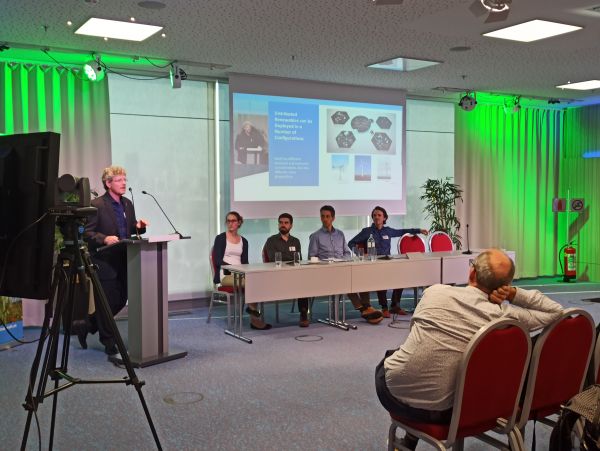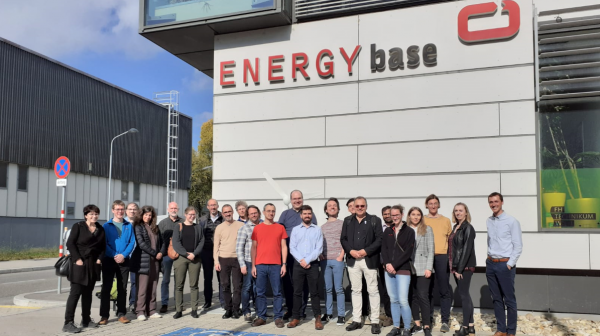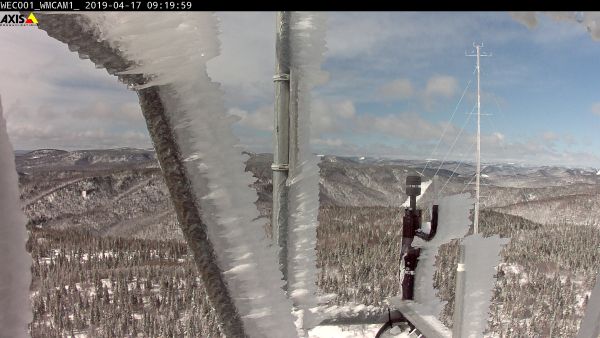IEA Wind Task 54: Wind Energy in Cold Climates (Working period 2022 - 2024)
Short Description
The European Green Deal of the European Commission to counteract climate change and achieve climate neutrality requires a massive expansion of renewable energies in all member states. Climate targets are also becoming more ambitious worldwide, and with them the expansion targets for wind energy. In many countries with pronounced winter climates, this means planning and operating wind turbines at sites with significant icing potential.
About 15% of the current turbine sites in Austria can be classified as so-called "cold climate" sites with frequent and severe icing. Here, icing poses a major challenge both during project planning and during operation of the plants. Even at sites in those regions of eastern Austria where a majority of Austrian wind turbines are in operation today, icing events occur several times per year. The considerably increased expansion target of the Renewable Expansion Act for wind energy of 10 TWh by 2030 means that a considerable part of the expansion will also take place at sites in alpine and semi-alpine terrain with, on the one hand, great wind potential, but also increased risk of icing on the other hand. The investigation of technologies and strategies for the safe and efficient handling of icing is therefore not least a high priority in the course of the further expansion of wind energy also for Austria.
For more than 20 years, Task 19 of the IEA Wind TCP, formerly Task 19, has been dealing with the various challenges of planning and operating wind turbines under icing conditions. The first work period of Task 54 focused on the following topics:
- Control of wind turbines and individual subsystems
- Treatment of uncertainties
- Modeling and testing
- Safety and acceptance
The Austrian contributions were mainly connected to the first two topics.
With regard to the core component in the operation of today's wind turbines under icing conditions, Energiewerkstatt took over the management of a subtask that dealt with the performance envelope of rotor blade heating systems. The work focused on developing a model of the performance envelope, taking into account the rotor blade dimensions, the heat output of the rotor blade heating system and the meteorological ambient conditions in the form of ambient temperature, wind speed and the water content of the air (liquid water content, LWC). The model calculates a limit curve up to which the heating power is sufficient to heat the heated surface of the rotor blade to a constant temperature, e.g. 0°C. This limit curve represents the so-called performance envelope of the rotor blade heating system. In addition to this, a database was created that contains exemplary time series of icing events from different regions of the world, which in turn can be fed into the model. This allows the regional differences in icing events as well as the resulting performance of rotor blade heating systems in specific regions to be represented. Secondly, a methodology for the validation of rotor blade heating systems was developed, enabling the demonstration of the performance of the system in the field using infrared camera-based temperature measurements of the blade surface in combination with the model of the performance envelope. The aim of the tools and processes developed is to promote standardization, which in future will make it possible to better evaluate and compare the systems developed by different manufacturers in the various phases of project development and operation.
Energiewerkstatt furthermore developed a transfer function for transferring the site-specific instrumental icing duration to potential icing periods of a nearby wind turbine. For a selection of locations for which simultaneous time series of operating data from unheated wind turbines and measurement data from unheated 1st-class anemometers were available, the wind measurement data and the wind turbine operating data were evaluated with regard to the icing periods that could be derived from them. For the correlation, comparison and statistical evaluation with regard to a possible transfer function between anemometer and wind turbine icing, a logistic regression model was used for the qualitative evaluation of the identified correlations. The results show that a direct application of the determined ratios to individual icing periods and to specific turbines is not possible. However, the overall statistical result is of great relevance, as it confirms the intuitive assumption commonly used in practice to date that the icing periods of the rotors of a wind turbine without rotor blade heating are of a similar order of magnitude to those of the instrumental icing of a nearby wind measurement with cup anemometer.
Project Images
Terms of use: The pictures listed underneath the header “Project Pictures” originate from the projects in the frame of the programmes City of Tomorrow, Building of Tomorrow and the IEA Research Cooperation. They may be used credited for non-commercial purposes under the Creative Commons License Attribution-NonCommercial (CC BY-NC).
Participants
Denmark, Germany, Finland (Operating Agent), Japan, Canada, Norway, Austria, Sweden, Switzerland, United Kingdom
Contact Address
Energiewerkstatt
Dipl.-Phys. Claas Rittinghaus
Heiligenstatt 23
A-5211 Friedburg
Tel.: +43 (7746) 28212 - 13
E-mail: claas.rittinghaus@energiewerkstatt.org





